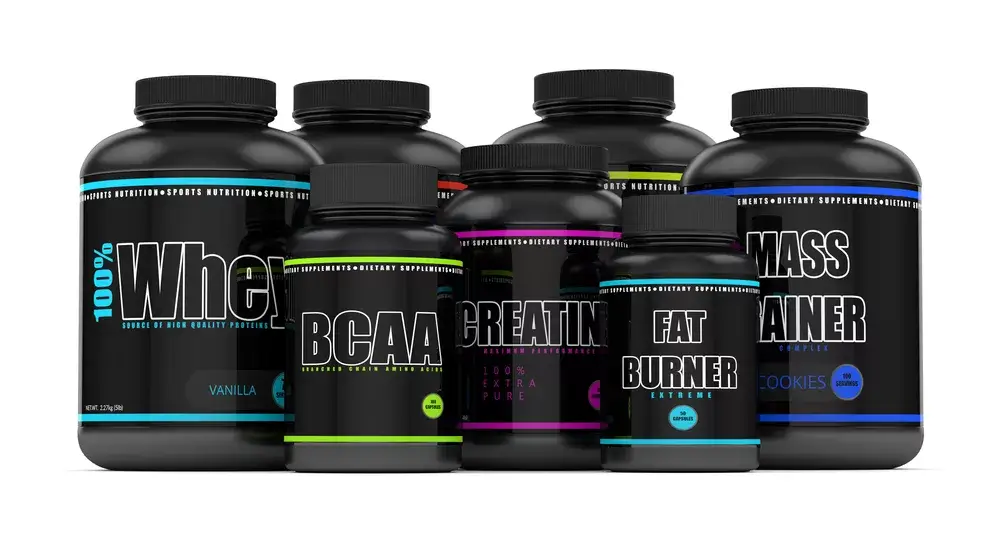Chest Day Reinvented: Why 20 Sets of One Exercise Might Be All You Need
Are you tired of complicated chest day routines that leave you exhausted but not seeing the results you want? You’re not alone. Many fitness enthusiasts struggle with finding the perfect balance of exercises to maximize chest growth.
What if you could simplify your chest workout while still achieving incredible gains? The solution might be simpler than you think: focusing on 20 sets of just one exercise. This approach not only streamlines your routine but also targets muscle growth in a highly effective way.
In this article, we’ll explore the benefits of dedicating 20 sets to a single chest exercise, the science behind muscle hypertrophy, and how this method can lead to significant strength and muscle gains. You’ll learn why volume is crucial, how to implement this strategy effectively, and the key advantages of this focused training approach.
Key Takeaways
- Simplicity and Focus: The 20-set approach simplifies your chest workout routine, enhancing focus and improving mind-muscle connection.
- Consistency and Progress: Repeatedly performing one exercise allows for better tracking of progress and leads to significant muscle and strength gains.
- Reduced Injury Risk: Mastering one exercise reduces the risk of injury by ensuring proper form and technique.
- Scientific Backing: High-volume training is supported by studies showing its effectiveness in promoting muscle hypertrophy and strength.
Comparison Table
20-Set Approach vs Traditional Chest Workout
Criteria | 20-Set Approach | Traditional Chest Workout |
|---|---|---|
Complexity | Simple, single exercise focus | Multiple exercises |
Time Efficiency | More efficient due to less setup time | Less efficient with various setups |
Progress Tracking | Easier with consistent exercise | Harder with varied exercises |
Injury Risk | Lower with focused form perfection | Higher with varied forms and weights |
Muscle Engagement | High due to repetitive targeting | Moderate with varied engagement |
Volume | High with 20 sets | Varies, often moderate |
The Science of Muscle Hypertrophy
Muscle Hypertrophy Explained: Muscle hypertrophy refers to the increase in muscle size achieved through exercise. This growth occurs when muscle fibers are subjected to stress, causing micro-tears that the body repairs and rebuilds stronger and larger. Two primary factors influence hypertrophy: mechanical tension and metabolic stress.
Why Volume Matters: High-volume training, such as performing 20 sets of one exercise, plays a critical role in muscle hypertrophy. Volume refers to the total amount of weight lifted during a workout session, which is a product of the number of sets, reps, and the weight used. High-volume workouts increase time under tension, leading to greater muscle damage and, consequently, more significant muscle growth.
Supporting Studies: Numerous studies support the effectiveness of high-volume training. For instance, research published in the Journal of Strength and Conditioning Research found that higher training volumes are associated with greater muscle hypertrophy. Another study in the Journal of Applied Physiology highlighted that volume is a key determinant of muscle growth, with higher volumes leading to more substantial gains.
Benefits of 20 Sets for Chest Training
Simplicity and Focus: Focusing on one exercise for 20 sets simplifies your workout routine, allowing you to concentrate on perfecting your form and maximizing muscle engagement. This focused approach can lead to better mind-muscle connection, which is crucial for effective training.
Consistency and Progress: Performing the same exercise consistently allows you to track progress more accurately. Over time, this consistency can lead to significant strength and muscle gains as your body adapts and becomes more efficient at the exercise.
Reduced Injury Risk: Mastering one exercise reduces the risk of injury compared to varied routines that might introduce poor form and unfamiliar movements. By focusing on perfecting your technique, you minimize the chances of strain and overuse injuries, making your workouts safer and more effective.
By incorporating 20 sets of a single exercise into your chest day routine, you can achieve remarkable muscle growth, improved strength, and a simplified, effective workout. This approach leverages the principles of muscle hypertrophy and volume to deliver results that more complex routines might not achieve. Stay tuned as we dive deeper into how to implement this strategy and maximize your chest gains.
Detailed Breakdown: The 20-Set Chest Exercise
Exercise Choice: Incline Bench Press
Recommendation: The Incline Bench Press is an ideal exercise for this 20-set approach. It targets the upper chest muscles (pectoralis major) effectively, which are often underdeveloped compared to the lower chest. This exercise also engages the shoulders and triceps, providing a comprehensive upper body workout.
Why Incline Bench Press?
- Upper Chest Activation: Incline positioning emphasizes the upper pectoral muscles, creating a balanced and fuller chest appearance.
- Versatility: Suitable for various fitness levels, the incline bench press can be modified with different weights and techniques.
- Form and Safety: Easier to maintain proper form compared to other chest exercises, reducing the risk of lower back strain.
Proper Form and Technique
Set-Up:
- Adjust the bench to a 30-45 degree incline.
- Lie back on the bench with feet flat on the floor and your back firmly against the bench.
- Grip the barbell with hands slightly wider than shoulder-width apart.
Execution:
- Start Position: Lift the bar off the rack and hold it directly above your chest with arms fully extended.
- Lowering Phase: Inhale and slowly lower the bar to your upper chest, keeping your elbows at a 45-degree angle to your body.
- Pressing Phase: Exhale and press the bar back up to the starting position, focusing on contracting your chest muscles.
Common Mistakes:
- Arching the Back: Keep your back flat against the bench to avoid lower back strain.
- Flaring Elbows: Maintain a 45-degree angle to prevent shoulder injury.
- Bouncing the Bar: Control the descent to maximize muscle engagement and avoid using momentum.
Progressive Overload
Tips for Progressive Overload:
- Increase Weight: Gradually add weight in small increments (2.5-5 lbs) once you can comfortably complete all 20 sets with good form.
- Add Reps: Start with a manageable number of reps per set and slowly increase the reps over time.
- Adjust Rest Periods: Reduce rest periods slightly as you progress to increase intensity.
Implementation Strategy
Warm-Up
Importance of Warming Up:
- Injury Prevention: Proper warm-up prepares muscles and joints for the intense workout, reducing the risk of injury.
- Performance Enhancement: Increases blood flow to the muscles, improving performance.
Warm-Up Routine:
- Dynamic Stretches: Arm circles, shoulder rotations, and torso twists (5 minutes).
- Light Cardio: Jumping jacks or brisk walking (5 minutes).
- Warm-Up Sets: 2-3 sets of light bench presses to activate the chest muscles.
Set Structure
How to Structure the 20 Sets:
- Initial Sets: Start with lighter weight for the first 5 sets to properly warm up the muscles.
- Middle Sets: Gradually increase the weight for sets 6-15, ensuring each set is challenging but maintainable.
- Final Sets: Use a consistent, slightly lighter weight for the last 5 sets to focus on muscle fatigue and endurance.
Rest Periods
Optimal Rest Periods:
- Between Sets: 60-90 seconds rest between sets to allow partial recovery while keeping the muscles under constant tension.
- Between Phases: If breaking the 20 sets into phases, take a longer rest (2-3 minutes) after completing 10 sets.
Enhancing Results with Proper Nutrition
Pre-Workout Nutrition
What to Eat Before the Workout:
- Carbohydrates: Provide energy. Examples include oatmeal, whole-grain toast, or a banana.
- Protein: Supports muscle function. Examples include Greek yogurt, a protein shake, or eggs.
- Timing: Eat 30-60 minutes before your workout to ensure the nutrients are available during exercise.
Post-Workout Recovery
Importance of Post-Workout Nutrition:
- Muscle Repair: Protein is crucial for repairing and building muscles.
- Glycogen Replenishment: Carbohydrates help replenish glycogen stores depleted during the workout.
Post-Workout Meal:
- Protein: Aim for 20-30 grams of protein. Examples include a protein shake, chicken breast, or a protein bar.
- Carbohydrates: Pair with a similar amount of carbs. Examples include rice, sweet potatoes, or a fruit smoothie.
Supplement Recommendations
Effective Supplements:
- Whey Protein: Fast-absorbing protein to support muscle repair and growth.
- Creatine Monohydrate: Enhances strength and performance.
- BCAAs (Branched-Chain Amino Acids): Reduce muscle soreness and support recovery.
- Omega-3 Fatty Acids: Reduce inflammation and support overall health.
Timing and Dosage:
- Whey Protein: 20-30 grams post-workout.
- Creatine: 5 grams daily, taken post-workout.
- BCAAs: 5-10 grams before or during workouts.
- Omega-3s: 1-2 grams daily with meals.
By focusing on 20 sets of the Incline Bench Press, you can maximize chest growth through simplicity, consistency, and targeted muscle engagement. Proper form, progressive overload, and strategic nutrition will enhance your results, making your chest day both effective and efficient.
Tracking Progress and Adjusting the Program
Measuring Success
Progress Photos:
- Frequency: Take photos every four weeks to visually track changes.
- Angles: Capture images from the front, side, and back to get a comprehensive view of your progress.
- Consistency: Use the same lighting, location, and pose for accurate comparisons.
Body Measurements:
- Areas to Measure: Chest, waist, hips, arms, and thighs.
- Tools: Use a flexible tape measure for accuracy.
- Frequency: Measure every two weeks to monitor changes closely.
Strength Gains:
- Tracking Weight Lifted: Record the weights, sets, and reps for each workout session.
- Performance Indicators: Note improvements in endurance and overall strength, such as increased reps or heavier weights.
Additional Metrics:
- Body Fat Percentage: Consider using a body fat scale or professional measurements.
- Fitness Tests: Periodically perform fitness tests, such as push-up or plank endurance, to gauge improvements in strength and stamina.
Making Adjustments
Identifying Plateaus:
- Signs: Stagnant progress in strength, body measurements, or visual changes.
- Duration: If no progress is seen over four weeks, it’s time to adjust.
Adjustment Strategies:
- Change Rep Ranges: Alternate between high reps (15-20) and low reps (4-6) to shock the muscles.
- Vary Exercises: Introduce new exercises or variations to target the muscles differently.
- Increase Intensity: Incorporate techniques like supersets, drop sets, or tempo changes.
- Rest and Recovery: Ensure adequate rest and incorporate active recovery days to prevent overtraining.
Deloading
When to Deload:
- Frequency: Every 6-8 weeks, or when experiencing persistent fatigue, soreness, or decreased performance.
- Indicators: Symptoms of overtraining, such as chronic muscle soreness, irritability, and poor sleep.
How to Deload:
- Reduce Intensity: Lower the weights to 50-60% of your usual load.
- Decrease Volume: Cut the number of sets and reps by half.
- Active Recovery: Focus on light, low-impact activities like yoga or swimming.
- Duration: Typically, a deload week lasts 5-7 days before resuming normal training.
Conclusion
Recap Benefits:
- Simplicity and Focus: The 20-set approach simplifies your workout and enhances the mind-muscle connection.
- Consistency and Progress: Consistent repetition of one exercise leads to significant muscle and strength gains.
- Reduced Injury Risk: Mastering one exercise minimizes injury risk by ensuring proper form and technique.
Encouragement: Embark on the 20-set chest workout journey with confidence. Consistency, dedication, and proper execution will lead to remarkable results. Remember, every rep and set brings you closer to your fitness goals.
Call to Action: Join the 20-set challenge today and share your progress on social media using the hashtag #20SetChallenge. Subscribe to our newsletter for exclusive tips and explore other fitness articles on RunThaCity.com to continue your fitness journey.
FAQs: The 20-Set Chest Workout
What is the 20-set chest workout approach?
The 20-set chest workout approach involves focusing on one chest exercise, performing 20 sets to maximize muscle hypertrophy and strength. This method simplifies the workout, enhances the mind-muscle connection, and allows for consistent progress tracking.
Why should I choose the Incline Bench Press for this approach?
The Incline Bench Press is ideal because it targets the upper chest effectively, which is often underdeveloped compared to the lower chest. It also engages the shoulders and triceps, providing a comprehensive upper body workout.
How often should I perform the 20-set chest workout?
It is recommended to perform the 20-set chest workout once a week. This allows sufficient time for muscle recovery and growth while integrating other muscle group workouts into your routine.
How do I warm up properly before starting the 20-set routine?
A proper warm-up includes 10 minutes of dynamic stretches and light cardio to increase blood flow to your muscles. Additionally, perform 2-3 sets of light bench presses to activate your chest muscles before starting the 20 sets.
How should I structure the 20 sets?
Start with lighter weights for the first 5 sets to properly warm up your muscles. Gradually increase the weight for sets 6-15 to challenge your strength, and use a consistent, slightly lighter weight for the last 5 sets to focus on muscle endurance.
What are the optimal rest periods between sets?
Rest for 60-90 seconds between sets to allow partial recovery while keeping the muscles under constant tension. This balance helps maximize performance and muscle growth.
How can I ensure continuous muscle growth with this approach?
Implement progressive overload by gradually increasing the weight or the number of reps over time. Track your progress and adjust the intensity to keep challenging your muscles.
What should I eat before and after the workout?
Before the workout, consume a balanced meal with carbohydrates and protein about 30-60 minutes prior. After the workout, focus on protein and carbohydrates to support muscle repair and glycogen replenishment. Examples include a protein shake and a banana or chicken breast with rice.
What supplements are recommended for this workout?
Effective supplements include whey protein for muscle repair, creatine monohydrate for strength and performance, BCAAs for muscle recovery, and omega-3 fatty acids for reducing inflammation.
How do I track my progress effectively?
Use progress photos, body measurements, and performance logs to track your progress. Take photos every four weeks, measure key body areas every two weeks, and record the weights, sets, and reps for each workout session.
What should I do if I hit a plateau?
If you hit a plateau, consider changing the rep ranges, varying the exercises, increasing the intensity with techniques like supersets or drop sets, and ensuring proper rest and recovery.
When should I incorporate deload weeks?
Incorporate deload weeks every 6-8 weeks or when you experience signs of overtraining, such as persistent fatigue and soreness. During a deload week, reduce the weight to 50-60% of your usual load and decrease the volume by performing fewer sets and reps.
Is the 20-set approach suitable for beginners?
Yes, the 20-set approach can be adapted for beginners by starting with lighter weights and gradually increasing the intensity as strength and endurance improve.
Can I combine this workout with other chest exercises?
While the 20-set approach focuses on one exercise, you can combine it with other chest exercises on different days or after completing the 20 sets to further target different parts of the chest.

























